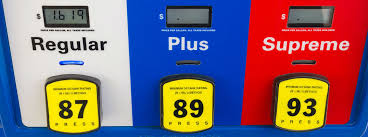
Assigning numerical scores on the 100 point scale has emerged as a standard tool for navigating the complicated world of wine. The intent to simplify may originally have been legitimate and laudable, but we’d argue that numerical scores have become the instruments of a new kind of retail tyranny that’s bad for both consumers and industry. Here are six reasons we think so.
(1) Points convey a false sense of precision. The late film critic Roger Ebert only had two thumbs to use in rating movies but wine critics have 100 points to work with – a range that theoretically enables extremely fine-grained distinctions. In practice, however, virtually every reasonably competent wine receives a rating between 85 and 95 (scores either above or below this bracket are rare). With only 10 marks in actual use, any claim to precision is illusory.
(2) The approach has a disturbing margin of error. It’s reasonable to assume that, due to variation in both wine and taster performance, a scorer may assign one point above or below what he or she might have on another occasion. This means that a wine scoring 90 one day could easily bounce down to 89 or up to 91 on another. In a 10 point range, three points represents a 30% margin of error. If every wine has three plausible scores, which do you put your money on?
(3) Scoring is a mass-production job. Numerical scores from major wine publications are the result of wines being evaluated in large-scale blind tastings – 100 wines or more at a time – where there is little time for reflection or to observe evolution in the glass. Ordinary people don’t experience wine this way, so why should we be confident such an approach will deliver reliably useful indicators?
(4) A certain profile routinely scores highly. In mass tasting events, the easiest way for a wine to stand out is to make a big impact, and the easiest way to do this is to have exaggerated features. In competitions, bigger body, more fruit, and richer flavors are point boosters, while elegance, finesse, and poise go begging.
(5) Points are subject to inflation. Once the points system became hegemonic, benchmarks were established with 90 marking the boundary separating the lands of Must Have and Don’t Bother. For ambitious properties and bigger brands, inability to break this barrier means failure and even a degree of shame, thus . . .
(6) Winemaking becomes point-gaming. Consumers may be shocked to learn the lengths vintners will go to wheedle an extra point or two from a critic. The techniques include additives designed to darken color and fatten texture. But the strangest work-around of all has to be the rise of consulting services that will analyze your wine, predict the score it will receive, and then advise on how to raise it.
Wine by the numbers? We’re giving it two thumbs way, way down.
Taste, talk and learn about wine his week in the FKC wine corner . . .
THURSDAY, SEPT 12 3-6 PM – FILL ‘ER UP?
2018 Paul Angerer Kamptal Gruner Veltliner “Kies,:” $18.95
2016 Clos Siguier Cahors, $16.95
2016 Château Le Thil, Bordeaux Côtes de Blaye, $16.95
FRIDAY, SEPT 13 3-6 PM – POINT/COUNTERPOINT
NV El Xamfrà, Brut Rosé Cava, $14.95
2016 Schola Sarmenti, Nardo Rosso “Roccamora,” $15.95
2018 Mauro Molino Barbera d’Alba, $15.95